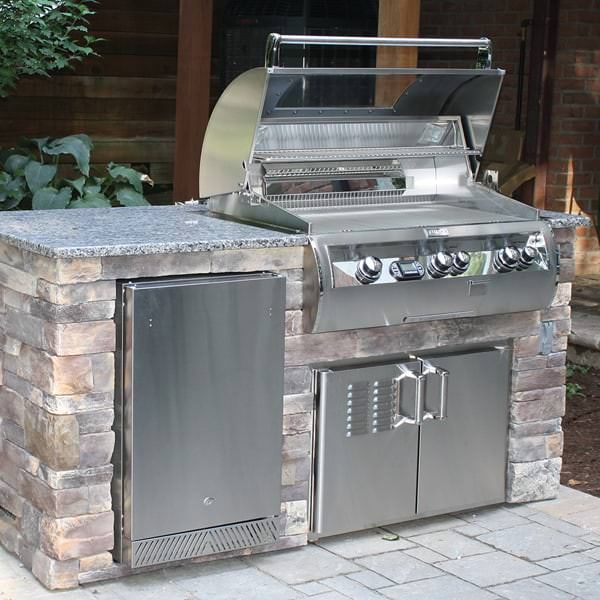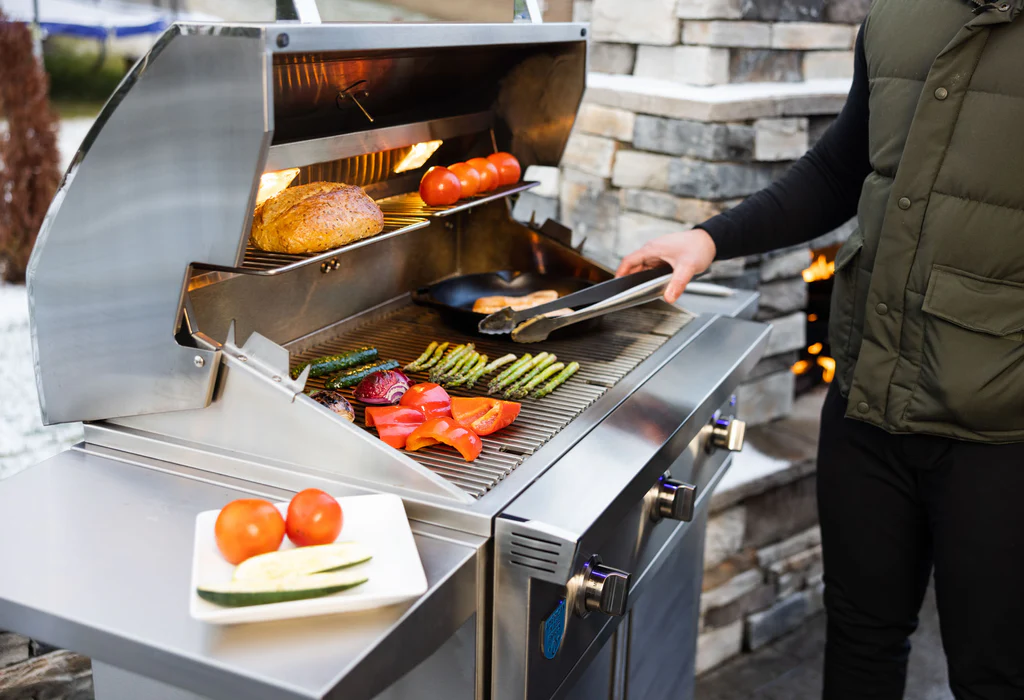When you light up your grill, the magic doesn’t just come from the fire. It’s the mix of sauces, rubs, and marinades that make every bite unforgettable. Yet many backyard cooks struggle with knowing when to use each, or how to combine them for the best results. That’s where this guide steps in — to simplify flavor pairing so you can grill with confidence.
The key to perfect grilled flavor lies in balance — the right sauce for moisture, the right rub for crust, and the right marinade for depth. When used correctly, these three can turn a simple meal into something worth remembering.
Many people use one flavor method and forget the others. But true grill masters know that flavor building is a process. You can layer taste by combining all three — without overwhelming your meat. Let’s look at how to choose and pair each one for perfect grilled flavor.
How do you choose the right sauce for each meat cut?
Every meat reacts differently to sauces. The fat level, texture, and cooking time all change how the sauce behaves. If you use a sweet sauce too early on fatty meat, it burns. But if you wait until the end, it creates a glossy finish.
Choose your sauce based on the meat’s texture and fat content. Thick sauces go with rich meats like pork ribs. Light sauces, like citrus or soy blends, match leaner cuts such as chicken or fish.
When choosing a sauce, focus on the base — tomato, vinegar, mustard, or fruit. Each one brings out different flavors.
| Sauce Base | Works Best With | Flavor Profile |
|---|---|---|
| Tomato-based | Pork ribs, beef brisket | Sweet, smoky |
| Vinegar-based | Pulled pork, chicken | Tangy, sharp |
| Mustard-based | Sausages, pork shoulder | Bold, zesty |
| Fruit-based | Fish, chicken wings | Light, sweet |
How to Avoid Common Sauce Mistakes
- Don’t apply sugar-heavy sauces too early.
- Always baste near the end of cooking.
- Let the meat rest before the final glaze.
Using sauce correctly gives your BBQ that professional shine and taste. You’ll notice the difference in the caramelized texture and even color on your meat.
When should you use a dry rub instead of a marinade?
A rub adds flavor through the surface, while a marinade works deeper. Knowing when to use each can change the texture and taste of your BBQ.
Use dry rubs when you want a crust or bark on your meat. Use marinades when you want the flavor to soak into the fibers.
Dry rubs are perfect for slow-cooked meats like ribs or brisket because they build that smoky outer layer. Marinades work best for chicken, seafood, or thin cuts that need quick flavor infusion.
| Type | Ideal For | Cooking Time | Key Ingredients |
|---|---|---|---|
| Dry Rub | Beef ribs, pork shoulder | Long and slow | Salt, paprika, brown sugar |
| Marinade | Chicken, fish, kebabs | Short (1–6 hrs) | Oil, acid, herbs, garlic |
Tips for Perfect Rub Application
- Pat meat dry before applying.
- Rub generously and evenly.
- Let it rest 20–30 minutes before grilling.
By using rubs wisely, you lock in flavor without losing moisture. For faster meals, choose a short marinade, then finish with a light rub before grilling.

What makes a winning marinade formula for grilling?
Marinades are simple chemistry. They tenderize, flavor, and protect meat during cooking. The perfect marinade is about balance.
A great marinade needs three things — oil, acid, and seasoning. Each plays a role in transforming texture and flavor.
| Component | Function | Common Examples |
|---|---|---|
| Oil | Retains moisture | Olive oil, sesame oil |
| Acid | Breaks down fibers | Lemon juice, vinegar |
| Seasoning | Adds flavor | Herbs, garlic, spices |
How to Build Your Own Marinade
- Start with one part acid and one part oil.
- Add salt and sugar for balance.
- Include herbs or aromatics for complexity.
For example, combine olive oil, lemon juice, garlic, and thyme for a simple chicken marinade. Or use soy sauce, ginger, and brown sugar for Asian-style ribs.
Remember: timing matters.
- Fish: 1–2 hours
- Chicken: 4–6 hours
- Beef: overnight
Too long, and acid will toughen meat instead of tenderizing it.

How do sauces, rubs, and marinades work together?
These three flavor methods can complement one another if layered correctly. But if done wrong, they can compete and ruin your meal.
Use a marinade first for tenderness, a rub second for crust, and a sauce last for moisture and finish.
Think of it like building flavor layers. Start with a base (marinade), then a surface (rub), and finally a glaze (sauce).
| Step | Method | Purpose | When to Apply |
|---|---|---|---|
| 1 | Marinade | Tenderize and flavor | Before cooking |
| 2 | Rub | Add crust and aroma | Right before cooking |
| 3 | Sauce | Finish and glaze | Last 10 minutes |
Example Layering Routine
- Marinate chicken in lemon and garlic mix overnight.
- Apply a paprika-salt rub before grilling.
- Brush honey BBQ sauce during the final minutes.
This simple process builds complexity without overpowering the meat.

Which rub and sauce pair best with ribs or brisket?
Ribs and brisket are BBQ classics. But not all sauces or rubs suit both.
For ribs, go sweet and smoky. For brisket, go bold and peppery.
| Meat Type | Rub Profile | Sauce Style | Cooking Method |
|---|---|---|---|
| Ribs | Brown sugar, paprika, garlic | Sweet tomato or honey BBQ | Slow cook |
| Brisket | Black pepper, salt, cumin | Tangy vinegar or spicy mustard | Smoked |
Why These Pairings Work
Ribs benefit from caramelization — sugar in rubs creates a glossy coating. Brisket, being dense, absorbs strong spice mixes better and pairs with acid-based sauces to cut the fat.
Adding a finishing sauce after resting helps seal in moisture and adds sheen. Always slice brisket against the grain for tenderness.
How long should you marinate before grilling for best flavor?
Time can make or break your BBQ flavor. Too short, and the taste won’t stick. Too long, and your meat may get mushy or sour.
Marinate for enough time to let the acid and seasonings work without breaking down the texture.
| Meat Type | Minimum | Ideal | Max Safe Time |
|---|---|---|---|
| Fish | 30 mins | 1–2 hrs | 3 hrs |
| Chicken | 2 hrs | 4–6 hrs | 8 hrs |
| Beef | 4 hrs | Overnight | 24 hrs |
| Pork | 2 hrs | 6–8 hrs | 12 hrs |
Quick Marinating Tips
- Use resealable bags to save space and coat evenly.
- Keep marinating food in the fridge.
- Don’t reuse marinade unless boiled.
When in doubt, shorter is safer. You can always add flavor later with sauces or glazes.

What mistakes ruin BBQ seasoning and how do you avoid them?
Even experienced grillers can make mistakes. Too much sugar, not enough salt, or bad timing can spoil the final result.
The biggest BBQ flavor mistakes are over-salting, saucing too early, and skipping rest time.
| Common Mistake | Result | Fix |
|---|---|---|
| Saucing too early | Burnt flavor | Apply last 10 min |
| Too much salt | Dry meat | Use less salt, add acid |
| No resting time | Loss of juice | Let rest 10 min |
Simple Habits for Better BBQ
- Always preheat your grill.
- Use a thermometer, not guesswork.
- Let meat rest before cutting.
Avoiding small errors can turn good BBQ into great BBQ. It’s all about patience and timing.
How do you match wood smoke with the flavor of your rub or sauce?
Smoke flavor adds the final touch. But the wrong wood can overpower your seasoning.
Match strong woods like hickory with rich meats and mild woods like apple with lighter proteins.
| Wood Type | Smoke Strength | Best For | Flavor |
|---|---|---|---|
| Hickory | Strong | Ribs, brisket | Bacon-like |
| Oak | Medium | Beef, lamb | Earthy |
| Apple | Mild | Poultry, fish | Sweet |
| Cherry | Mild | Pork, chicken | Fruity |
| Mesquite | Very strong | Steak | Bitter if overused |
Pairing Example
- Apple wood + Honey BBQ sauce = soft sweetness
- Hickory + Black pepper rub = deep smoky kick
- Cherry wood + Citrus marinade = balanced freshness
Pick one wood type and stick with it. Mixing too many can muddle the flavor.
Conclusion
Sauces, rubs, and marinades are not just extras — they are the backbone of great barbecue. When you understand how each one works and how to pair them, your grill becomes a flavor machine. Start simple, follow balance, and experiment with timing and texture. Soon, you’ll not only cook better BBQ but taste the difference in every smoky, juicy bite.
Frequently Asked Questions
What is the difference between a marinade and a BBQ sauce?
A marinade soaks into the meat and tenderizes while a BBQ sauce is usually applied towards the end to add flavor and glaze. (Smoked Bbq Co)
Can I use the same rub for different types of meat?
Yes, many rubs work for beef, pork or chicken, though you may adjust the spice or sugar levels to match the meat’s flavour. (Smoked Bbq Co)
How long should I apply a dry rub before cooking meat?
You can apply a rub just before cooking or a few hours ahead; for longer cooks you may let it sit up to 24 hours. (Smoked Bbq Co)
When should I brush sauce onto grilled meat?
Apply sauce in the last 10-20 minutes of cooking so sugars can caramelize without burning or leaving raw flavour. (creeksidebbq.com)
What wood smoke should I pair with different meats for best flavour?
Use stronger woods (like hickory) for rich meats, and milder woods (like apple or cherry) for lighter meats to avoid overpowering the flavour. (Lone Star Grillz)
How do I store homemade BBQ rubs, sauces and marinades safely?
Dry rubs stay fresh ~6 months in a cool dark place; homemade sauces must be refrigerated and used within a few weeks. (Smoked Bbq Co)
Is it safe to reuse marinade that has been in contact with raw meat?
No, unless you bring it to a boil to kill bacteria. Otherwise it carries risk of contamination. (Smoked Bbq Co)
How can I build my custom marinade formula quickly?
Use one part acid + one part oil + seasoning. Adjust for meat type: lean meats may use milder acid, rich meats heavier. (stubbys.com)
